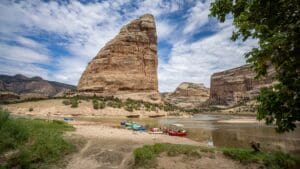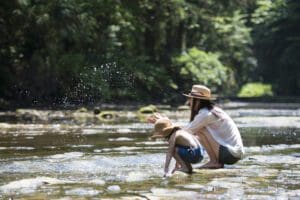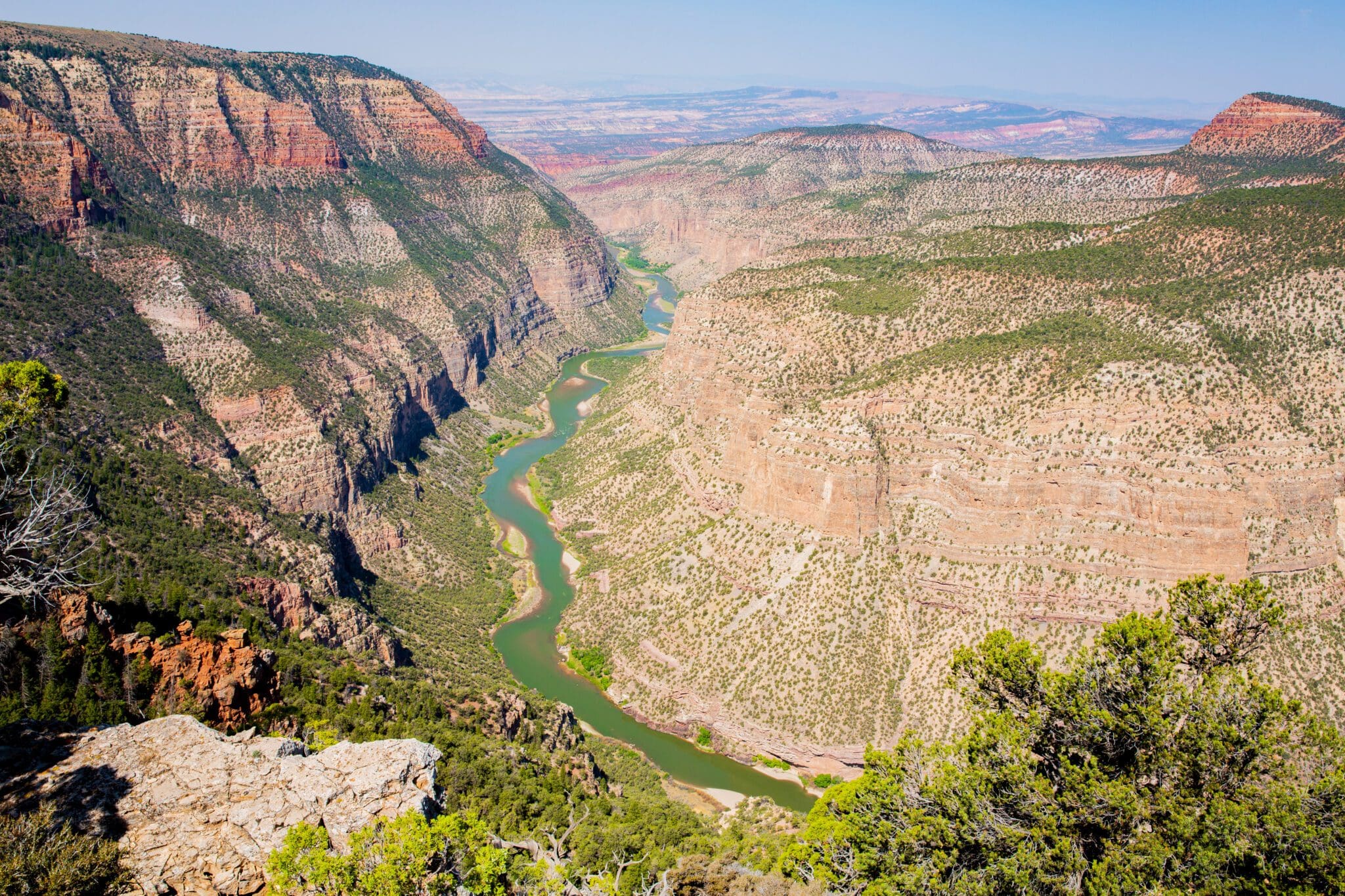In honor of National Public Lands Day, we’re revisiting a small-scale infrastructure project
that helps people access one of the wildest rivers in the world.
DEERLODGE PARK, Co. — Tucked at the opposite end of Dinosaur National Monument’s famous Quarry
Exhibit Hall, a fossil museum that received 83,000 visitors last year, lies a lesser-known yet equally
breathtaking attraction.
The Deerlodge Park Campground offers seven first-come, first-serve campsites for travelers to pitch a
tent among the towering cottonwoods of Colorado — and look up at the stars in perfect silence.
However, most people only come here to enter the Yampa River.
Known for thwarting every major dam project proposed on its waters (except a few minor diversions),
the Yampa remains the least-regulated tributary in the Colorado River Basin.
But extended summers are shortening the floating season. And because the flow of the river depends on how fast snow melts, hotter temperatures are causing the Yampa to flood more intensely, straining vital infrastructure.
Bringing Resources to the Wild
As flooding continues to impact virtually every park in the national register, Federal Land Management
Agencies (FLMAs) must augment their staffs to handle a backlog of transportation projects.
Enter the Office of Federal Lands Highway (FLH).
Responsible for more than 30 percent of the nation’s land, including over 500,000 miles of roads, the
FLH serves to solve and manage challenges that are wide-ranging in environment, geography, and
complexity.
From building the Hoover Dam Bypass over the Colorado River Gorge to reconstructing Pennsylvania
Avenue in front of the White House, the FLH and partnered agencies pioneer some of the most unique
transportation projects in the country.
Prepare to Stop, Danger Ahead
The Deerlodge Park Campground periodically floods during Colorado’s spring snowmelt. After decades
of enduring above-average runoff seasons, Deerlodge Road and its supporting infrastructure were
beginning to crumble.
The drainage system, which only received touch-ups since being installed in 1966, was failing under
heavier, unprecedented loads of water. Ten of the 93 culverts carrying runoff under the roadway had
severely eroded. Another two were past repair.
This contributed to subsurface instability that accelerated the pavement’s decline, especially in
designated parking areas.
Additionally, the riprap that monument officials installed in 2003 was deteriorating, inching the Yampa
10 feet closer to the road every year, an environmental review found.
Dinosaur had an imminent riverbank failure on its hands — and 12.7 miles of roadway to mend.


Mobilizing for Universal Access
In coordination with the National Park Service (NPS), the CFLHD proposed a $5.6-million restoration.
After receiving endorsement from the Department of Interior (DOI), the CFLHD deployed a taskforce to
the easternmost end of Dinosaur’s 211,000-acre expanse.
And in four months, a hybrid field crew:
- Installed exposed-rock riprap with a “launchable toe,” a stabilization measure that autocorrects
through time, to armor the riverbank. - Removed and resurfaced the existing 12.7 miles of pavement with a fresh layer of hot asphalt.
- Enhanced parking areas, including curb and gutter replacements, for better functionality.
- Applied cement treatment to pavement cavities to reinforce subgrade.
- Repaired, relocated, and added culverts to improve drainage flow.
From inception to completion, the project aligned with stringent quality standards and ecological
considerations, and Atlas Technical Consultants was hired as the Construction Management leader for
the project.. Along with delivering construction management and field inspection services, Atlas
provided a Technical Advisor (COTA), Construction Inspector (CI), and off-site project administrators to
ensure success.
Building the Foundation for Public Lands Work
Beyond serving a recreational purpose, Deerlodge Park Road enables biologists to care after critical
habitats. It allows park rangers to engage the next generation of conservationists through school
programs. And it grants private landowners total control of their properties.
If you’re interested in learning more about Atlas’ services and FLH project experience, contact the
Project Manager Patrick Young, P.E.
